There are dozens of great apps that can be powerful tools for helping children cope with the symptoms of ADHD. Given the fact that more than 80% of children ages 12 to 17 have a cell phone capable of using these apps, it’s necessary to identify those apps that can best help your child. Once you know which apps will work best, your kids will need to learn how to use them effectively to address their own particular needs. Here are the five best apps for helping tweens and teens with ADHD, with links to our app guides that tell them how to use them most effectively.
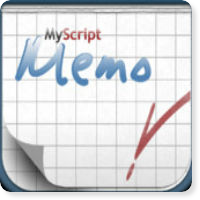 MyScript Memo is a small notepad for your child’s mobile device, meant to travel with and carry short concise messages or reminders for users ages 4 and up. What makes MyScript Memo different from other, more robust and highly functional apps is the touch screen writing pad. Instead of inputting text using the device’s keyboard, Myscript Memo users simply move their finger (or stylus) along the screen to draw their letters. It’s a more interactive way of writing memos, making users more apt to check their app frequently, and a great handwriting practice tool.
MyScript Memo is a small notepad for your child’s mobile device, meant to travel with and carry short concise messages or reminders for users ages 4 and up. What makes MyScript Memo different from other, more robust and highly functional apps is the touch screen writing pad. Instead of inputting text using the device’s keyboard, Myscript Memo users simply move their finger (or stylus) along the screen to draw their letters. It’s a more interactive way of writing memos, making users more apt to check their app frequently, and a great handwriting practice tool.
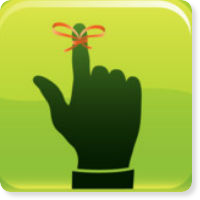 Forgetful is a great tool for users of all ages who want to better manage their day-to-day tasks with a simple but highly functional to-do app. When making reminders, users have the ability to use text, video, or a voice memo. Forgetful helps improve organization and planning skills by reminding kids to achieve goals on time.
Forgetful is a great tool for users of all ages who want to better manage their day-to-day tasks with a simple but highly functional to-do app. When making reminders, users have the ability to use text, video, or a voice memo. Forgetful helps improve organization and planning skills by reminding kids to achieve goals on time.
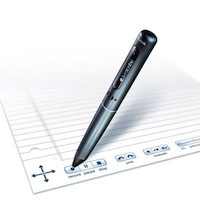 LiveScribe is a “smart pen” for ages 8 and up that records voice notes (and has a playback speaker) and also uses an internal memory that records notes and drawings done with the pen. LiveScribe makes it easy to study notes because it also saves the accompanying lecture. Users can tap on a handwritten word in their notes, and hear the audio that was going on when that word was written. This means users can Focus on a class and take notes without worrying about missing something because they can go back and fill in missing gaps in their notes or re-listen to explanations from class.
LiveScribe is a “smart pen” for ages 8 and up that records voice notes (and has a playback speaker) and also uses an internal memory that records notes and drawings done with the pen. LiveScribe makes it easy to study notes because it also saves the accompanying lecture. Users can tap on a handwritten word in their notes, and hear the audio that was going on when that word was written. This means users can Focus on a class and take notes without worrying about missing something because they can go back and fill in missing gaps in their notes or re-listen to explanations from class.
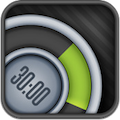 30/30 is an app designed for kids ages 6 and up to help manage time effectively and stay on task. The app allows users to create timed and categorized tasks to help them keep track of how long they have spent on a particular project and when it is time to move on or take a break. 30/30 requires users to exercise the Planning thinking skill, systematically generating the steps toward achieving a particular goal.
30/30 is an app designed for kids ages 6 and up to help manage time effectively and stay on task. The app allows users to create timed and categorized tasks to help them keep track of how long they have spent on a particular project and when it is time to move on or take a break. 30/30 requires users to exercise the Planning thinking skill, systematically generating the steps toward achieving a particular goal.
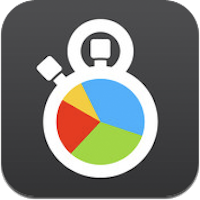 mytime Organizer is an app that helps users manage and organize many short-term and long-term tasks into blocks of time for ages 8 and up. mytime Organizer is versatile, easy to use, and perfect for tracking school work, chores, and leisure time at home. This app is an excellent way to track the amount of time and effort users devote to different tasks in school and at home, making kids self aware, and more efficient with time management.
mytime Organizer is an app that helps users manage and organize many short-term and long-term tasks into blocks of time for ages 8 and up. mytime Organizer is versatile, easy to use, and perfect for tracking school work, chores, and leisure time at home. This app is an excellent way to track the amount of time and effort users devote to different tasks in school and at home, making kids self aware, and more efficient with time management.


Dear Dr. Kulman,
Much appreciate the ADHD apps you listed here for children! Thank you for taking the time to write and post the article along with the list, too. The Forgetful app was a new one to us, so many thanks for that info, as well.
Some of your readers might also be interested in knowing about another app for UNFOCUSED or OVERWHELMED readers with ADHD.
The Reading Focus Cards desktop app (Patent 8,360,779) for Macs & Win PCs, is a very helpful productivity app for reading digital media—whether online or offline. The virtual reading card and reading filter are completely CUSTOMIZABLE to individual readers’ needs. When used, the virtual card w/ filter FLOAT on top AND STAY on top of other underlying desktop applications—whether online or offline.
To access:
Macs: https://itunes.apple.com/us/app/read-and-focus/id920617853?mt=12
Windows PCs: https://gumroad.com/l/ReadingFocusCards
This Reading Focus Cards app is helpful for children, teens and adults, too, with a variety of reading challenges. For more info about this innovative desktop app, please visit http://www.focusandread.com/page/488513590.
Thanks again for the wonderful article here—AND for ALL you do daily to help so many readers with ADHD!
Happy Reading—Everyone!
Joan M. Brennan